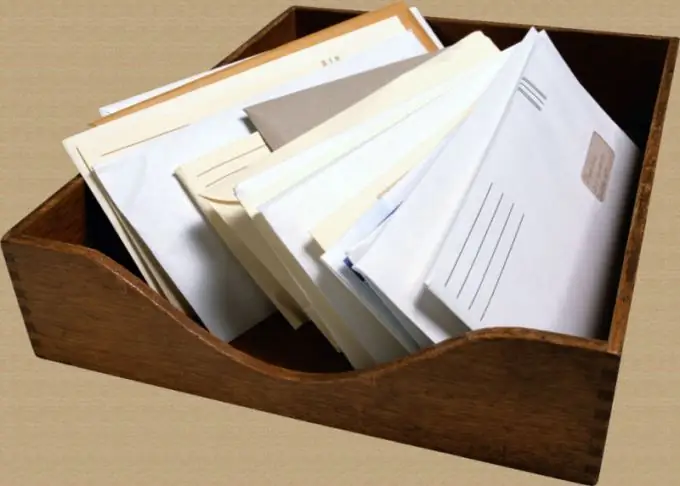Documents entering the organization are subject to accounting. Usually registering incoming letters is the task of the office, but in small teams this responsibility is often assigned to the secretary. The procedure for processing correspondence, as a rule, is described in detail in the internal instructions for office work. If it is absent, when processing new documents, you need to adhere to a certain order of actions.

Necessary
- - journal of registration of incoming correspondence;
- - stamp "Incoming letter".
Instructions
Step 1
Accept and sort the incoming correspondence. All letters must be opened, except for those with a special mark, for example, "Personally to the manager" or "Confidential", etc. Do not rush to throw away the envelope, first check if the return address is indicated in the text. Registration does not require accounting documents (invoices, invoices), congratulations, advertising materials.
Step 2
Enter information about the received letters in the log of incoming correspondence. It can be electronic or traditional (paper). When filling out electronic forms, follow the recommendations of the program developers. Computer systems facilitate clerical work, helps to quickly find the information you need. However, unification is important in them, strict adherence to the rules for entering information, otherwise the document may get lost in the database.
Step 3
Buy a traditional log book at a printing house or arrange it yourself in an A4 notebook. The main requirement for it is ease of search, clarity and accuracy of filling. It is convenient to keep a journal in the form of a table with the following columns: 1. Registration date. Consider incoming letters on the day of receipt and in the evening submit them to the manager for consideration, unless a different procedure is adopted in the organization; 2. Registration number. This document attribute consists of the number of the file-case "Incoming documents" (according to the approved nomenclature of the organization's affairs) and the serial number (from the beginning of the calendar year) of the received letter. For example, "No. 01-12-273", where 01-12 is the nomenclature number of the case, 273 is the unique number of the letter. All received correspondence is registered once, regardless of the number of copies received later, including electronic ones; 3. The author of the letter (organization, individual), for example, "Vstrecha LLC" or "Regional administration, deputy head V. S. Sidorov", etc. 4. The subject of the document. You can fill in this column with information from the heading of the letter or briefly formulate the main idea after reading it. Write in such a way that later you can easily remember which document is in question and explain it to your colleagues. For example, "On the conclusion of a contract for transport services" or "On the provision of information on income tax before 12.12.2011", etc.; 5. Executor. Fill in the box after receiving the manager's visa. Enter the name of the person who will prepare the response. Note the due date here. Highlight or underline the date of reply to the urgent letter. 6. Notes. Here you can make notes on the fulfillment of the manager's order, or indicate the presence of important attachments to the letter, or mark the number of copies that employees have at work.
Step 4
Complete the table as you see fit. For example, fearing for the safety of documents, select the box for the signature of the contractor when receiving the letter. However, don't overload the journal and yourself with overly verbose entries. The document contains all the necessary information, registration forms only help to trace the stage of work on it.
Step 5
Put a special stamp on all letters, which indicates the type of correspondence - "Incoming". The print should be in the lower right corner of the first page of the document. Make sure that the print does not overlap the text. Enter the serial number and date of receipt in the print line manually.






